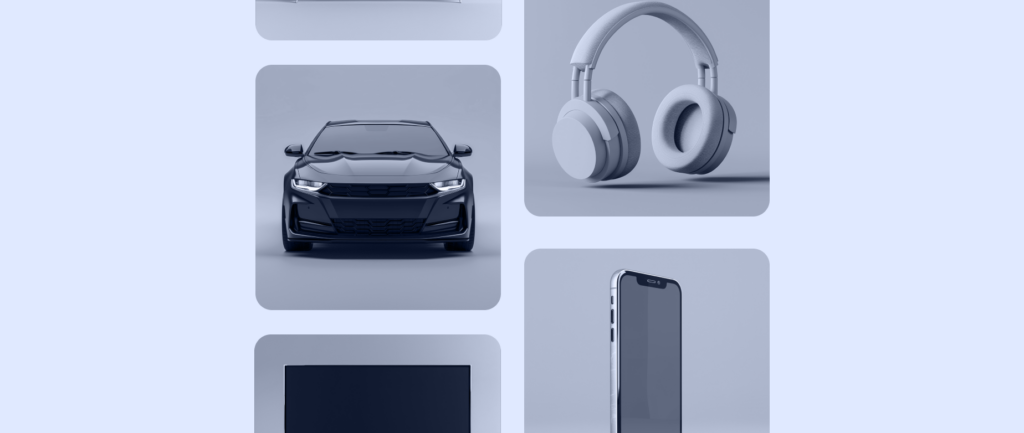Since British computer scientist Kevin Ashton coined the term “Internet of Things” (IoT) in 1999, connected devices have grown into a huge market, with one study predicting that by 2030, there will be more than 32 billion IoT devices worldwide.
As the technology becomes more integrated into everyday life, entrepreneurs are exploring how IoT can improve their companies, products and services.
Learn more about the benefits of IoT devices and how e-commerce retailers can leverage IoT technology.
What is IoT?
The Internet of Things (IoT) is a network of electronic devices and apps connected to each other over the internet or an intranet. These intranet or internet connected devices can collect and exchange data through smart sensors, cloud computing, machine learning, and artificial intelligence.
IoT systems (such as Siri or Amazon Alexa) can make consumers’ lives easier by giving them the ability to control smart devices in the physical world using IoT applications on their mobile devices, voice-controlled speakers, or other tools.
An effective IoT system can use connected devices to automatically collect data and automate tasks to save people time. For example, consumers can use an IoT application on their smartphone to program the lights to turn on as soon as they arrive home.
What are IoT devices?
IoT devices are physical devices that connect to the Internet, use cellular data, or wirelessly to applications through technologies such as Bluetooth. IoT devices use software and hardware to communicate data with other smart devices and IoT applications.
Some IoT devices use artificial intelligence and machine learning to make informed, automated decisions based on input from IoT sensors: for example, a smart thermostat takes sensor data about temperature and weather patterns and uses AI processing to predict and adjust the temperature to optimize energy consumption.
Benefits of IoT devices for businesses
IoT devices can help your business in many ways:
New sources of income
IoT technology can create new revenue streams: For example, a personal care company that sells toothbrushes could create a smart toothbrush that uses IoT sensors to collect data about users’ brushing habits and alert them when the brush head needs replacing.
For more information
Reliable IoT devices exchange data with users in real time, giving sellers up-to-date information on how products are performing and areas that need improvement. For example, if users of a smart refrigerator don’t use the voice control feature, it could be a sign that the technology isn’t responding as customers expect.
Companies can use this data to upgrade, design new products, and provide tailored experiences for specific consumer groups.
efficiency
IoT devices can help businesses create more efficient systems. For example, in a warehouse, smart shelves can send alerts when inventory is low to avoid stock-outs. And if your company uses a large number of IoT devices, you can use an IoT device management system to connect and manage your devices from one central location.
Examples of IoT devices
Below are some examples of popular IoT devices:
Smart Home Devices
An increasing number of internet-enabled devices are making our home life more convenient: for example, smart lights with sensors can automatically turn on when someone enters a room, and smart objects such as speakers can react and respond to user commands.
Security Systems
Smart security systems leverage IoT technology to provide users with instant updates about their home or office. For example, reliable security IoT devices such as smart sensors and motion detectors connected to an application on your smartphone can monitor your home while you’re away.
Other IoT security devices include smart locks, smart doorbells with live video streaming, and glass break sensors.
Smart Car
The automotive industry continues to incorporate IoT devices into new cars that can connect to the Internet. These connected cars transmit a variety of data about the vehicle, including maintenance needs.
Wearables
Wearable IoT devices such as watches use wireless connectivity to give users more information about themselves, such as their resting heart rate, and help them make changes in different areas of their lives.
For example, HabitAware’s smart bracelet notifies users about subconscious habits such as nail biting.
How Retailers Can Use IoT Devices
Here are some ways entrepreneurs can leverage IoT devices in their companies.
Product development
Retailers can explore how they can improve or enhance their products and services through IoT devices: for example, an e-commerce shoe retailer could develop a new line of IoT running shoes that connect to an app on a user’s smartphone to provide real-time data about their activity.
Inventory control
IoT hardware sensors and software applications make inventory management and order fulfillment processes more intuitive and efficient.
For example, smart shelves and sensors can track individual stock-keeping units (SKUs), which are codes used to identify and track products, and software applications on mobile phones can help manage inventory through remote monitoring.
IoT devices can also improve order delivery by tracking the fastest delivery route and time frame for packages.
Customer Experience
Retailers can also leverage data from IoT products to improve customer experiences: IoT devices can collect and share data about customer behavior, allowing businesses to use it to identify and resolve customer service issues.
For example, a company selling IoT washing machines can assess which parts of their product users like and dislike in order to design even more useful features in the future.
IoT Device FAQs
What are examples of IoT devices?
An example of an IoT device is a smartwatch that can connect to a smartphone application to provide real-time data on health metrics such as heart rate and sleep patterns.
What does “IoT” stand for?
IoT stands for “Internet of Things,” a term that describes a network of interconnected electronic devices that can collect and share data with users and other devices.
How do IoT devices work?
IoT devices use smart sensors, software, cloud computing, machine learning and other technologies to monitor, store and transmit data to users over the internet and other networks.

